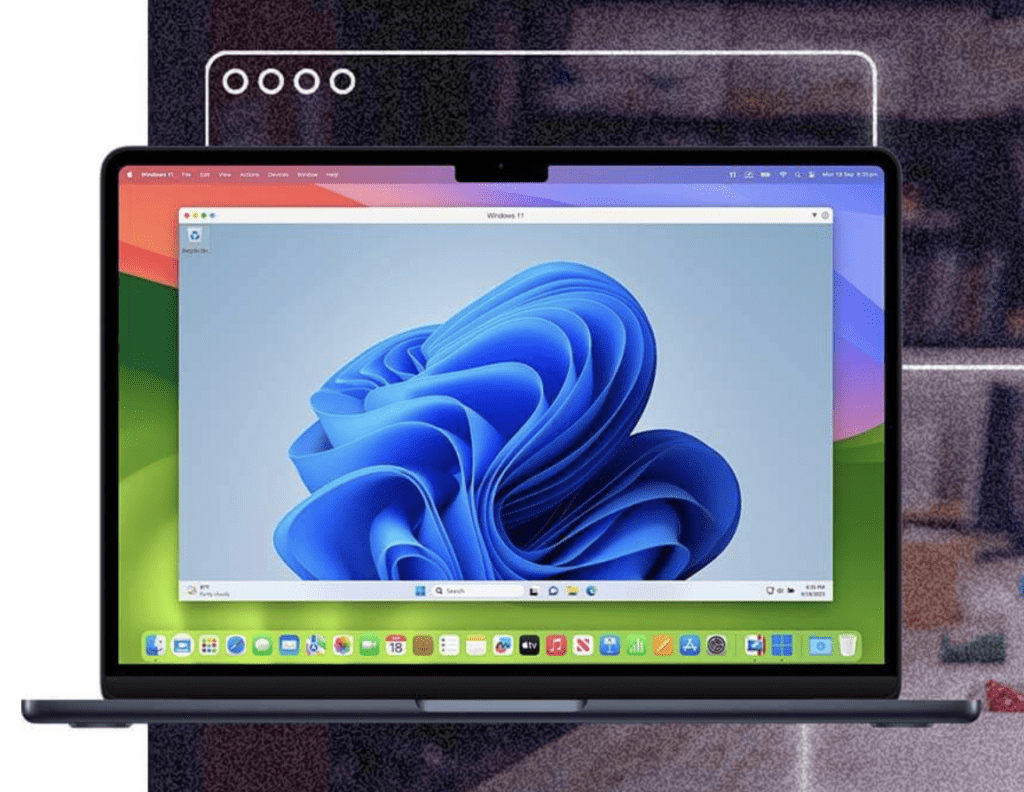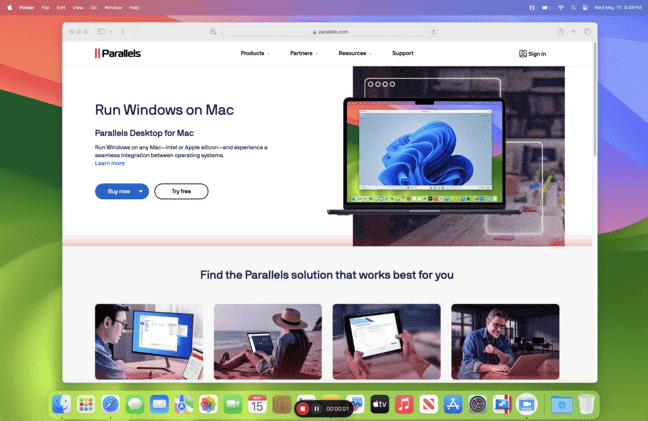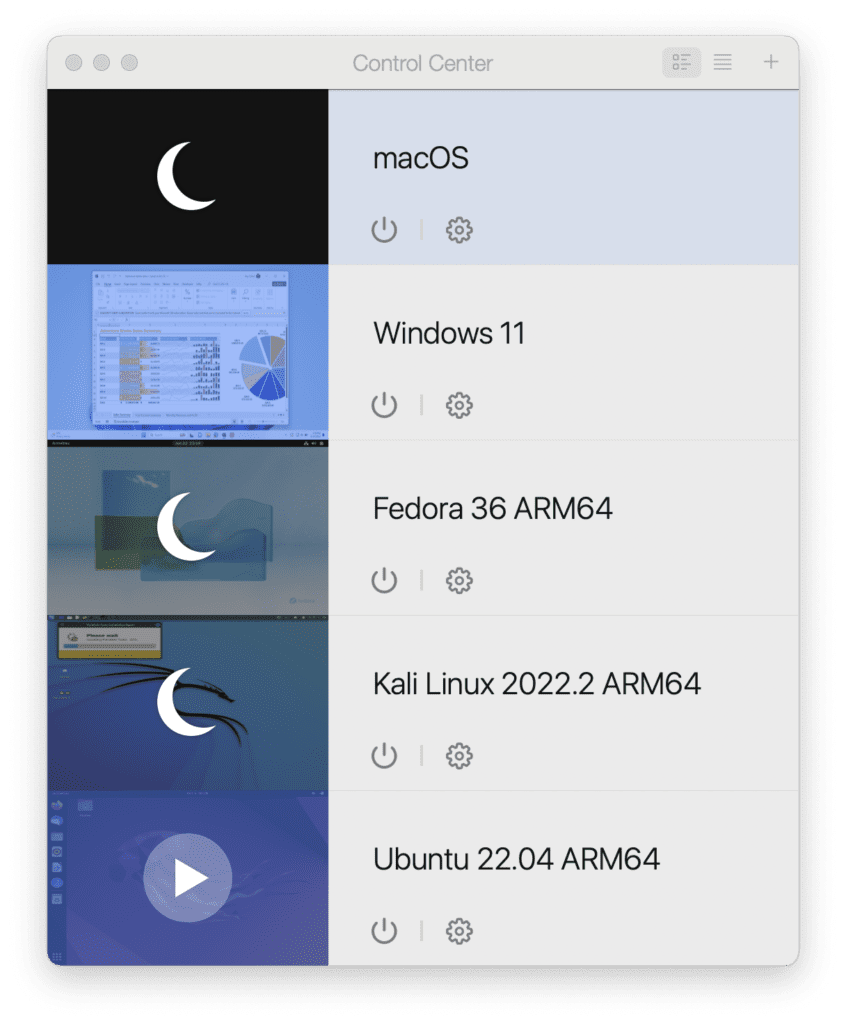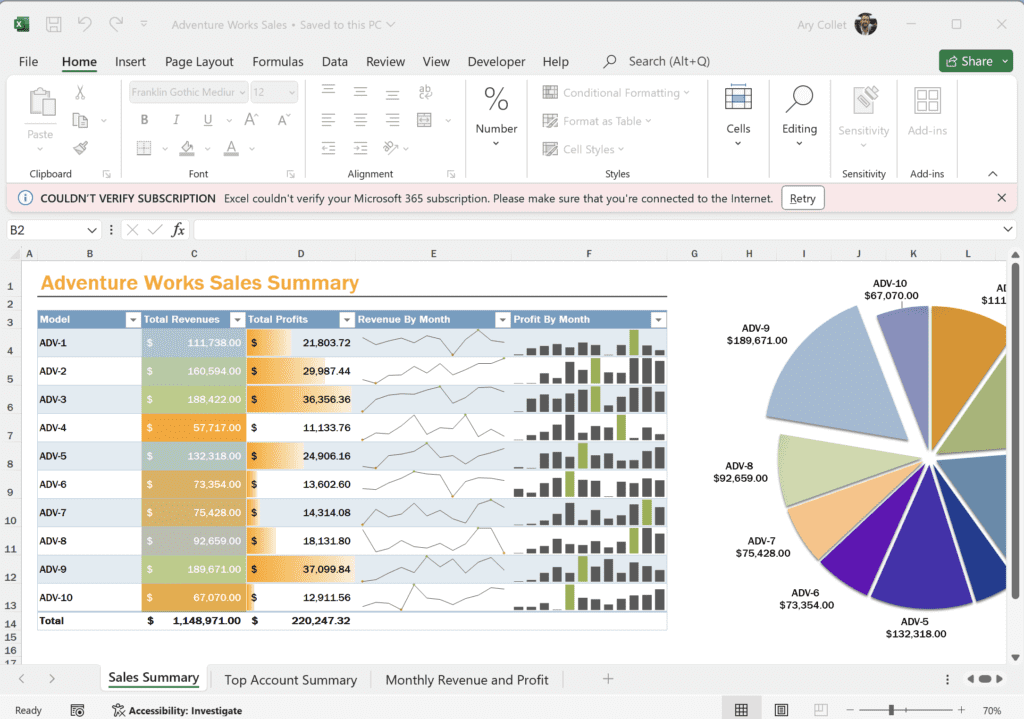
How to take a screenshot on a Mac
If you are one of the millions of Mac users who need a quick, straightforward way to take screenshots, I’ve got you covered.
Taking a screenshot on a Mac is easier than ordering takeout, thanks to the different shortcuts offered.
With just a few taps, you can take a screenshot to share with coworkers, add to a blog post, or save a favorite image or photo.
If you’re not sure how to take a screenshot or don’t understand why your shortcuts aren’t working, read on.
I have an entire guide dedicated to helping you capture that perfect screenshot or recording.
Parallels lets you run Windows programs seamlessly on your Mac. Get your free trial!
5 ways to take a screenshot on Mac
Unlocking the full potential of your Mac goes beyond knowing how to open a browser and finding your favorite apps.
Learning to capture and share what’s on your screen effectively can streamline your workflow, improve collaboration, and help you share your creativity.
Let’s look at several methods for capturing screenshots on your Mac like a pro.
1. Capture a portion of your screen

The simplest way to capture a screenshot is to use the Command-Shift-4 keyboard shortcut.
This method is like the snipping tool you’re likely familiar with from using PCs.
Here is how:
- Press Command-Shift-4 to change a pointer to a crosshair.
- Select the area of a screen you want to capture by dragging the cursor.
After releasing the mouse button, the screenshot appears as a PNG image on your desktop.
You can then upload it to a blog or social media site or send it as an email attachment.
2. Capture the entire visible portion of the screen in a screenshot

This shortcut captures your entire screen, making it useful when you’re trying to show a colleague what’s happening on your screen or share an error with IT support.
Other tabs and chat boxes will be visible in the screenshot, so close out anything that you don’t intend to share.
Here’s how:
- Press Command-Shift-3 to take a screenshot of the entire screen.
- The screenshot will appear as a PNG image on your desktop, which you can then upload to Slack, add to an email, etc.
3. Take a screenshot of an active page

Sometimes, you need to take a screenshot of a dynamic feature, such as a menu bar with an item selected.
Active screenshots are great for creating tutorials, documenting interactions with software or websites, or similar dynamic processes.
To copy a screenshot of an active page, follow these steps:
- Press Command-Shift-4 to change a pointer to a crosshair.
- Tap on the spacebar on your keyboard. The cursor will change to a camera.
- Select the active application window you want to capture by moving your cursor and highlighting the active window.
- Click the mouse button on the window you want to capture. The screenshot will appear as a PNG image on your desktop.
Alternatively, to paste the screenshot, navigate to the location you’d like to share the image (Slack, Teams, etc.) and press Command-V.
4. Create an adjustable screenshot

This shortcut allows you to take a much more customized screenshot by selecting the size or window to screenshot and accessing the recording button.
Here’s how:
- Press Command-Shift-5. A clip box will appear on your screen.
- Drag the corners of the box to select the sections you want to screenshot.
- Use the options at the bottom to adjust your screenshot. Select the entire screen, choose a different window, or use the recording button to take a video of all or a portion of your screen.
- The screenshot or recording file will appear on your desktop.
5. Take a screenshot of the Touch Bar (if available)
In some cases, you may need to take a screenshot of the items in your Touch Bar.
While this is a less common application, it can be helpful if you are working with IT support or writing a detailed tutorial.
To take a screenshot of the Touch Bar, open System Preferences and select Keyboard.
Click on “Customize Control Strip” and drag the Screenshot button to your Touch Bar.
Use this button to take screenshots as needed.
What happens if the capture area tool isn’t working on macOS?
In some cases, the shortcuts above may not work. You press the buttons or make the clicks, but nothing happens.
There are a few reasons why this might happen — and it’s usually related to your settings.
Parallels Desktop users, for example, may find that updating their MacOS makes tools that worked previously stop working.
In this case, you’ll need to give Parallels Toolbox permission to record the screen. Here’s a walk-through on how to do this.
If you are a Mac user, the issue might be your system settings. Start by navigating to the Apple menu, then select:
System setting > Keyboard > Keyboard shortcuts > Screenshots
Make sure all the items on the list are checked off. Try the shortcuts above again, and you’ll likely find they work.
How do you take a screenshot on a Mac without pressing buttons?
What if you don’t have a keyboard or your keyboard isn’t working? Good news —you can still take a screenshot using just your mouse!
Here’s how:
- Select the Finder icon in your Dock (that’s the little blue and gray face).
- Choose “Applications,” then find the “Utilities” folder.
- Within the Utilities folder, you’ll see a camera icon labeled “Screenshot.” Double click.
- The tool will open, allowing you to use the same options as Command-Shift-5, including adjusting your screenshot, taking a recording, and other actions.
Another option is to add a screenshot tool to your Touch Bar:
- Navigate to System Preferences > Keyboard > Customize Control Strip.
- Drag and drop the screenshot button to the Touch Bar.
How do you take a Mac screenshot using the keyboard?
The simplest way to take a screenshot on a Mac is to use the shortcut Command-Shift-3. This method allows you to adjust the size and shape of the screenshot.
Command-Shift-5 provides the most options, as it allows you to record, choose a different window, and select the size of the screen grab.
Alternatively, you can add the screenshot button to your Touch Bar, as described in the section above.
Save your screenshots directly to your clipboard on Mac
Want to save your screenshots to your clipboard to copy and paste elsewhere? You can save your screenshots directly to your clipboard instead of saving them as files on your desktop.
This is useful if you want to paste the screenshot into another application, such as an email, document, or image editor.
Here’s how to accomplish that:
- To capture your entire screen and save it to your clipboard, press Control + Shift + Command (⌘) + 3.
- For a selected portion, press Control + Shift + Command (⌘) + 4, then select the desired area.
- For a specific window, press Control + Shift + Command (⌘) + 4, then press the Spacebar, then click the window.
Then you can paste the screenshot into your document or image editor using Command (⌘) + V.
Streamline your day by mastering the Mac screenshot
The screenshot option on Macs is a small but mighty tool. It can be used for sharing funny memes, improving collaboration at work, or sharing moments of creativity. However, you use it, knowing these shortcuts and screenshot tricks will help you work faster and more efficiently.
Supercharge your workflow with Parallels Toolbox for Windows and Mac. Use it to optimize your PC, reclaim disk space, and much more. Try it free for 14 days.

